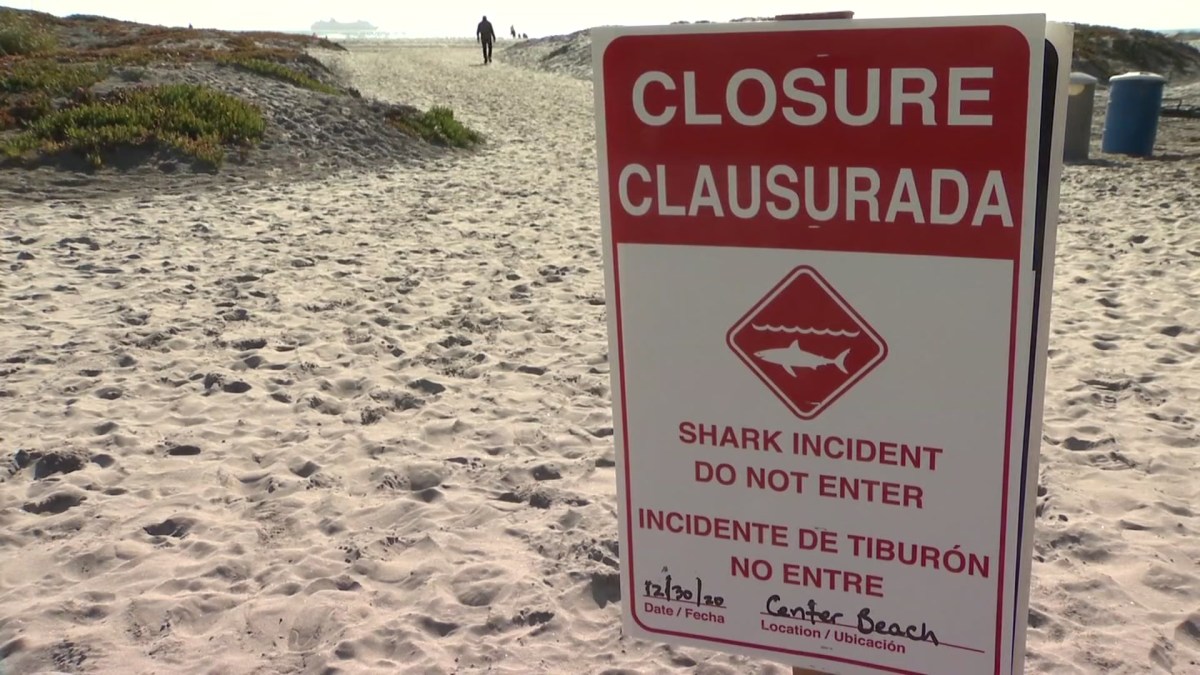
On Wednesday, Phil Garn got the scare of a lifetime. He went out for his regular ocean swim in Coronado and came face-to-face with a shark. Luckily, the shark only bit into his fin but was enough to send him frantically swimming back to shore. As a long-distance swimmer, Garn is used to sharing the ocean with sharks but making physical contact with one was strange.
Cal State Long Beach Shark Lab researcher James Anderson also found it to be odd.
“It is an unusual occurrence,” Anderson said. “We see juvenile white sharks in and around water users all the time. Most places where we go to do tagging work is where we know there are sharks and where there are sharks there are people. The majority of the time, these people don’t even know the sharks are there."
"We can monitor it from a drone or from any kind of air surveillance and we can see the animals and they really pay very little if any attention to water users. What happened to Phil is an unusual event and certainly for it to happen at this time of year when we would normally expect animals to not be present in these beach locations," Anderson said.
Anderson says at the moment, they’re seeing a population resurgence of white sharks in Southern California.
Shark Lab is working hand-in-hand with lifeguards across the coast, including Coronado, to better equip lifeguards with information to help address public safety concerns when it comes to shark sightings. One of the ways they’re doing it is through tagging sharks.
Anderson says they insert a tag into the shark, which emits a signal every 45 seconds. That signal has an ID and registers with every monitor it passes, providing a time stamp, date, and ID number.
“If we have an animal that’s tagged, we have a record of it,” Anderson said. “We have an approximate size range of the animal, we know how long we’ve been monitoring it for. Yes, to some extent, if we know that a tagged animal is within a certain area and know the size of that animal and if we think that the animal is pushing the boundaries of where its diet starts to change to a more marine-mammal based diet, then yes, you could argue that there’s a potential for increased risk of some kind of interaction with water users when you have a large animal.”
And the increased presence is prompting some officials to question if there’s now an increased worry to consider.
“People are having more interactions and certainly more observations of these sharks, so it’s kind of something that cities, managers, lifeguards all of these kinds of organizations are more and more interested and perhaps concerned about making sure there isn’t any increased risk to public safety,” Anderson said.
Coronado Lifeguard Captain Sean Carey said they’ve been seeing an uptick in shark sightings, specifically juvenile white sharks, over the past year and are hoping Shark Lab might hold the key to finding out why and if it’s something to be concerned about.
“We want to know not only about the lifecycle of the sharks and their migration but basically sharks and people being in the water together is a concern of course. So, we want to know how do sharks behave around people in the water,” Carey said. “We know how people behave in general, but we want to know what the sharks are doing and it's obviously for public safety reasons primarily.”
"local" - Google News
January 03, 2021 at 12:17AM
https://ift.tt/38V6WIb
Are Local Shark Sightings Becoming More Frequent? - NBC San Diego
"local" - Google News
https://ift.tt/2WoMCc3
https://ift.tt/2KVQLik
Bagikan Berita Ini














0 Response to "Are Local Shark Sightings Becoming More Frequent? - NBC San Diego"
Post a Comment